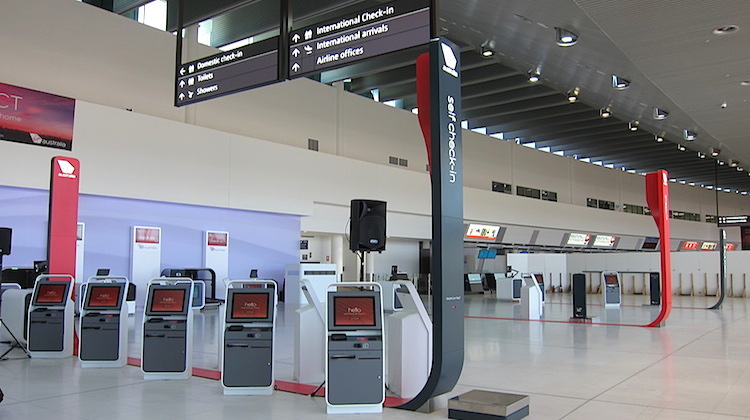
Virgin Australia has opened the doors to its new $300 million home at Perth Airport.
While passengers will have to wait until November 22 to experience the new Terminal 1 Domestic Pier, Virgin chief executive John Borghetti and Perth Airport chief executive Brad Geatches gave media a tour of the new facilities on Friday morning.
Virgin is moving its domestic interstate flights from Terminal 3, on the western side of the airfield, to a newly built Domestic Pier at Terminal 1, located on the eastern side.
This will bring Virgin’s intra-WA, interstate and international services together for the first time, helping improve connection times for passengers and making it easier to transfer cargo from domestic to international flights and vice versa.
Borghetti says the stunning new terminal puts Virgin in a leading position in Perth, one of the airline’s most important markets with about 560 flights a week and has experienced significant growth in recent times. Virgin had one million more seats in WA in 2015 compared with 2010.
“It is a world class airport for may I add a world class airline,” Borghetti told reporters in the new T1 Domestic Pier on Friday.
The T1 Domestic Pier has 12 hybrid desks which have been developed by technology provider SITA, which can be switched from self-service bag drop to manned checkin counters within five minutes.
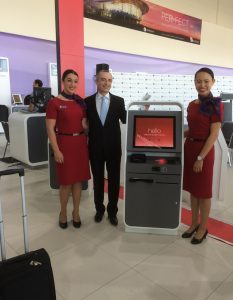
Borghetti said this would allow the airline the flexibility to cater for the demands of different customers, as well as better manage operations in peak and off-peak times of the day.
There are also 28 self-service checkin kiosks for travellers to print boarding passes and baggage tags.
SITA president for Asia Pacific Ilya Gutlin said the “world-first hybrid check-in and bag drop service” offered customers flexibility and choice.
“It puts customers in control of their own airport experience based on their needs, and therefore offers them a more personalised journey, from the moment they step into the terminal,” Gutlin said in a statement.
“The solution, developed on a global standard common-use platform, provides Virgin Australia with the opportunity for future implementations at airports across their airline’s network.”
Once airside, the terminal has 12 departure gates including three dedicated to wide-body aircraft. There is also an airside link between the T1 Domestic Pier and Terminal 2, where Virgin Australia Regional Airlines and Virgin’s wholly-owned low-cost subsidiary Tigerair Australia operate from.
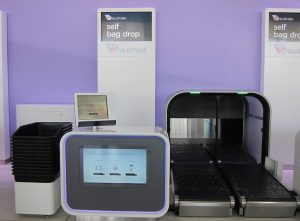
Borghetti said minimum connection times from regional to interstate flights, or from domestic to international, would be cut from up to one and three quarter hours to one hour once the new terminal was operational.
Virgin has also built a new 1,711 square metre lounge – twice the size of the airline’s existing facility at Terminal 3, which has the capacity to handle 400 guests.
“It is truly going to be a flagship lounge,” Borghetti said.
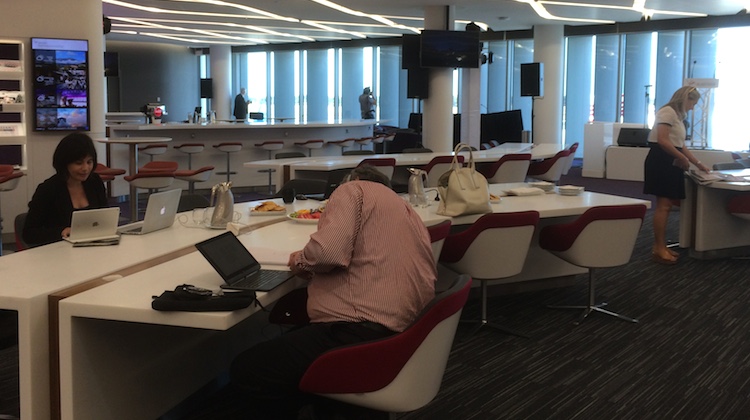
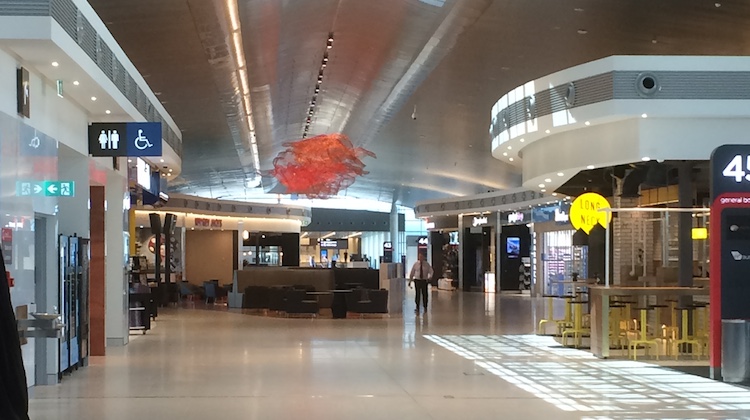
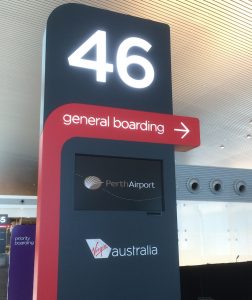
Qantas will take over Terminal 3 once Virgin moves out.
Perth Airport hopes eventually to have all flights operating from the eastern side of the airfield some time in the next decade.
“We are now working with the airlines generally about planning and designing that final phase of consolidation,” Geatches said.
“Even though the demand for aviation in Western Australia is slowing, we are not breaking stride with our investments. We understand that aviation you have to be able to look through the cycle because what you are delivering is complex and has long lead times.”
Construction on the terminal, which cost $300 million, was delayed by 12 months due to the complexity of the project and some problems with steel purchased by the company that built the terminal, Geatches said.










